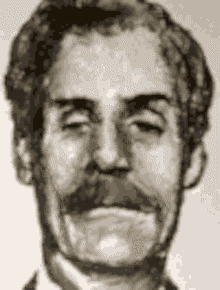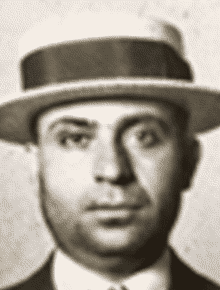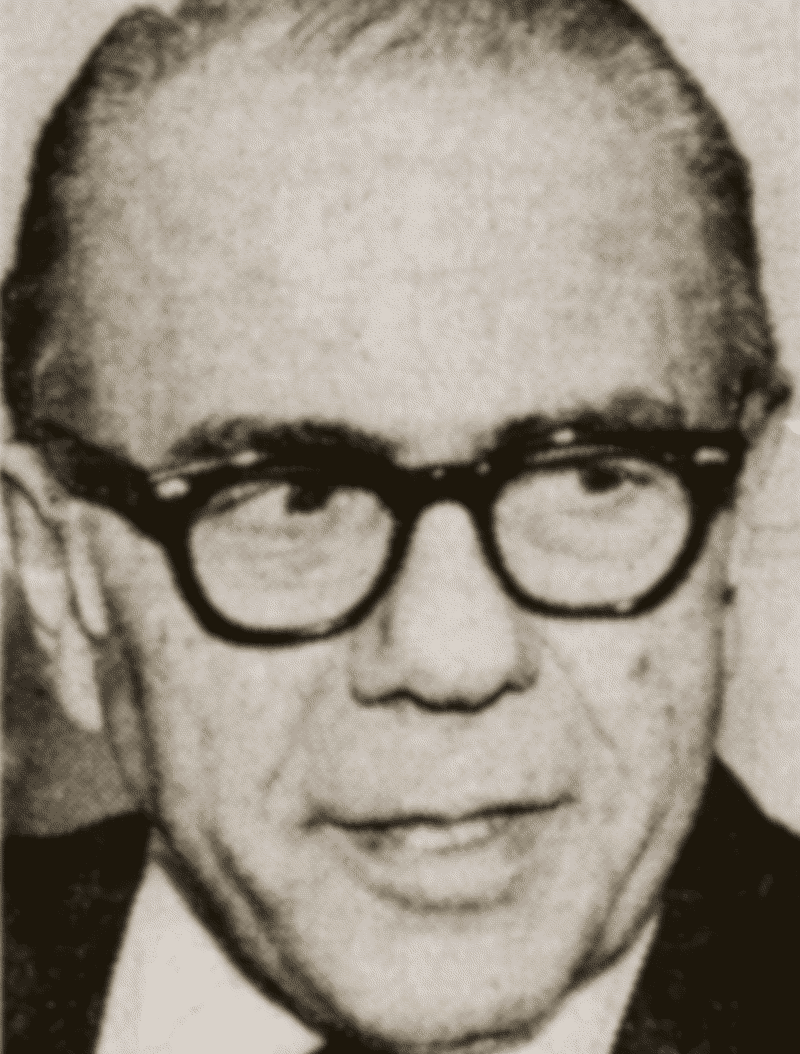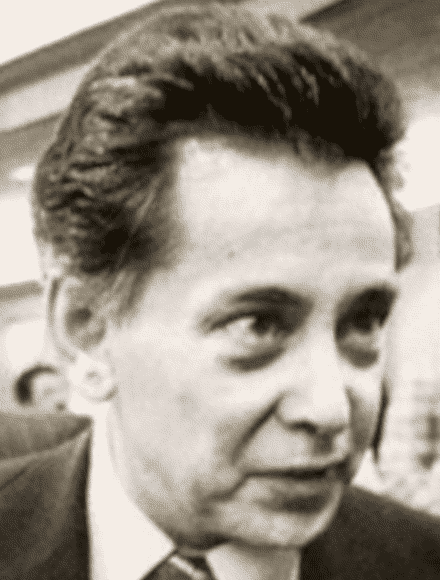

Mafiosi and Black Hand extortionists existed in the Philadelphia area from about the turn of the 20th Century, possibly earlier. Mafia chronicler Nicola Gentile reported that he was inducted into a crime family in Philadelphia around 1907. But, aside from that single mention (confined to a footnote), Gentile reported nothing else about the organization or the city. The Sicilian-Italian underworld was probably less developed than crime families in Pennsylvania's Pittsburgh and Scranton-Pittston areas. A Mafia group linked to Caccamo, Sicily, existed in the area but was not dominant. Other Sicilian-Italian organized crime elements included gangs of Calabrians and eastern Sicilians (not part of the western Sicilian Mafia tradition). As late as 1931, according to one local journalist, "Philadelphia... was not an important city to La Cosa Nostra." The rise of the earliest documented Mafia boss - Salvatore Sabella - appears to have been orchestrated before Prohibition by mafiosi in New York City. Despite Sabella's authority and connections, the underworld remained fragmented until the last years of his reign. Further confusing matters for historians, some individuals known as early bosses may instead have been holders of the "rappresentante" role.* Even after consolidation, a significant division between Sicilian and Calabrian factions lingered in the crime family for decades. Additional deep factional divisions emerged over time. While named for the city of Philadelphia, the organization's headquarters was often in New Jersey. Some early bosses (perhaps rappresentanti) were based in fairly remote New Brunswick, New Jersey, located between Newark and Trenton. Historically, the Philly Mob's home territory has contained southeastern Pennsylvania, the southern half of New Jersey, including Atlantic City, and a portion of Delaware. Following legalization of Atlantic City casino gambling in the 1970s, New York organizations began to intrude on its territory.
* An FBI memorandum from June 18, 1963, indicated a rappresentante was a sort of liaison or family ambassador who attended national meetings. In such a role, a rappresentante might be more visible than a boss/capo, who wielded actual power within the crime family territory, or might be the single regional spokesman for a fragmented underworld with multiple bosses.

Philadelphia area

Sabella
1919 - Salvatore Sabella (Born July 7, 1891, at Castellammare del Golfo, Sicily. Died Jan. 14, 1962, at Philadelphia.) Sabella was born in the same Sicilian city that produced Stefano Magaddino, Joseph Bonanno and Gaspare Milazzo. All moved into Mafia leadership positions in major American cities (Magaddino in Buffalo, Bonanno in New York, Milazzo in Detroit). Sabella reached the U.S. before 1915 with his family. The clan settled in the Castellammarese colony in Williamsburg, Brooklyn, and Sabella joined the Mafia in Brooklyn as a young adult. He reportedly was groomed for leadership by Giuseppe Traina, a trusted associate of boss of bosses Salvatore D'Aquila. Within a short time, Sabella was selected as "rappresentante" for Mafiosi in the Philadelphia area. He brought some order to the regional Sicilian-Italian underworld and established a pro-D'Aquila organization. The core of Sabella's underworld organization looks to have been a Castellammarese colony to the north of Philadelphia, but his powerful allies caused south Philadelphia Sicilians and some others to fall in line behind him. The Sabella Mafia feuded for a time with a local gang led by the Zanghi brothers.
1927 - Rival gang leader Anthony "Muskie" Zanghi appeared to be the target on May 30, 1927, when gunmen unloaded shotguns and automatic pistols in front of the Cafe Calabria, 824 South Eighth Street, killing Zanghi's nineteen-year-old brother Joseph and gang associate Vincent "Scabby" Cocozza. Muskie Zanghi managed to escape injury. (Future singing sensation Mario Lanza was a witness to the shooting.) Zanghi cooperated with authorities in the investigation, leading to the arrests of Sabella, John Avena, John Scopoletti, Joseph Ida, Dominick Festa, Luigi Quaranta and Antonio Dominick Pollina. Quaranta was eventually convicted but later had his conviction overturned. The investigation of the case revealed that Sabella had originally entered the U.S. without proper documentation and may have been fleeing a Sicilian murder charge when he did so. Consideration was given to deporting Sabella, but he remained in the U.S. (The Pennsylvania Crime Commission and Philadelphia newspapers have stated otherwise.)
1931 - Sabella and his organization were part of a conservative Mafia faction in the U.S. that overthrew boss of bosses Giuseppe Masseria in the 1930-31 Castellammarese War. The victory of the conservative Castellammarese forces and the elevation of Salvatore Maranzano to the boss of bosses throne momentarily enhanced the status of Sabella and the Philadelphia Mafia. After several months, Maranzano was assassinated. Too closely linked to the murdered boss of bosses for safety, Sabella was easily convinced to step down as Philadelphia boss.
Writers of Wrongs: "Zanghi 'squeals' after brother's murder" (May 30, 2017 post)

Avena
1931 - John Avena (Born April 7, 1893, at Novara, Messina, Sicily. Killed Aug. 17, 1936, at Philadelphia.) Sabella reportedly designated John Avena as his successor. Avena, originally from eastern Sicily, probably was not part of the Sicilian Mafia tradition. But he was a powerful local crime figure and had worked closely with Sabella. Avena was known by the nickname of "Nasone," translated "Big Nose." He had been in Philadelphia since his arrival as a teenager in 1908. He reportedly moved into organized crime first as a Black Hand extortionist and later as a bootlegger and gambling racketeer. He was among the Mafia leaders accused of the 1927 Zanghi and Cocozza killings but not convicted. During Avena's relatively brief reign as boss, his organization entered into a partnership with the Jewish 69th Street Mob, gambling specialists, while it battled the rival Lanzetti brothers, who became a local power around 1921 and engaged in bootlegging, narcotics peddling, counterfeiting and robbery. The feud may ultimately have cost Avena his life.
1936 - John Avena, then age forty-three, was the successful leader of numbers gambling in South Philadelphia and operator of gaming rooms at Eleventh and Christian Streets and Ninth Street and Washington Avenue. On August 17 of that year, he was shot to death at the notorious "Bloody Angle" intersection of Washington and Passyunk Avenues. (It was at least the third attempt on Avena's life - he was shot at in summer 1926 and spring 1927.) Witnesses said gunmen fired at Avena with submachine guns from a moving automobile. He suffered bullet wounds to the chest and abdomen. His associate Martin Feldstein was also killed in the attack. Suspects in the murders were identified by witnesses and indicted while still at large. A nationwide manhunt for the alleged triggermen was conducted while news reports surfaced that they had been killed and disposed of in New Jersey.
Writers of Wrongs: Mafia boss shot down at Philly's 'Bloody Angle' (Aug. 17, 2018 post)
1936 - Joseph Bruno (Born Feb. 11, 1889, at Messina, Sicily. Died Oct. 22, 1946, at New York City.) Joseph Dovi, known as "Joe Bruno" became boss following the killing of Avena. Dovi, like his predecessor, was a native of the Sicilian province of Messina, which is generally regarded as outside of the Mafia tradition, and arrived in the U.S. as a teen. After some time in western New York State, Bruno moved to Philadelphia. As boss, Bruno largely kept his distance from the Philadelphia underworld, ruling initially from his residence in Bristol, Bucks County, northeast of the city, and later from the Trenton, New Jersey, area. During his reign, the feud with the Lanzetti brothers was settled and the crime family's Calabrian faction grew in strength.

Ida
1946 - Joseph Ida (Born June 4, 1890, at Fiumara, Calabria, Italy. Died March 1984, in Italy). The death by natural causes of Joe Bruno allowed Ida, leader of the Calabrian faction and close friend of Bruno, to take the helm of the Philadelphia crime family. He became the crime family's first non-Sicilian boss. Ida had been a strong backer of the Bruno regime within Philadelphia. Like Bruno, he lived some distance from Philadelphia during his term as boss. Ida's residence was located at Highland Park, in New Jersey's Middlesex County, just northeast of New Brunswick and considerably closer to New York City than to Philadelphia. Philly rackets were directly overseen by Ida's underboss, Camden-based Marco Reginelli. During Ida's reign, the crime family reportedly expanded to include a still greater number of Calabrian criminals.
1957 - The fact that Ida had some significant role in the Sicilian-Italian underworld became apparent when he was found in attendance at the November 1957 Mafia convention at Apalachin, New York. However, his central New Jersey home address masked his leadership of the Philadelphia Mob. The exposure apparently was not to Ida's liking, and he reportedly responded to it by fleeing the United States.
1958 - Late in 1958 or early in 1959, Ida turned management of the crime family over to Antonio Domenick Pollina. The widely accepted story is that Ida returned to his native country, settling in Fiumara in the Calabria region, and within a couple of years renounced the U.S. citizenship he acquired through naturalization. Longtime Philly Mafia member Harry Riccobene insisted, however, that Ida did not leave the U.S.
1958 - Antonio Domenick Pollina (Born Sept. 20, 1892, at Caccamo, Sicily. Died Feb. 27, 1993, at Philadelphia.) Pollina, whose nickname has been written both as "Mr. Migo" and "Mr. Migs," arrived in the U.S. as an adult. He was among the local Mafia leaders charged and acquitted following the 1927 Zanghi and Cocozza murders. He also tangled with law enforcement over a New Jersey assault and battery case and federal liquor charges. Unlike the two previous bosses, Pollina resided within the city of Philadelphia. He lived on South Eleventh Street and later on Snyder Avenue. But his proximity to the Philly rackets did not help his popularity with the crime family membership. Noting deep division in the organization, the national Mafia Commission withheld formal recognition of Pollina as boss, reportedly designating him as "interim boss" until the Philadelphia underworld could be united. Pollina identified Angelo "Bruno" Annaloro (not related to earlier boss Joseph Bruno) as his primary rival and sought to undermine and perhaps to kill Bruno. Some reports state that Pollina ordered his aide Ignazio Denaro to murder Bruno. Instead of following the order, Denaro told Bruno about it, and Bruno appealed to the Commission.
1959 - The Commission determined that Pollina had abused his interim authority by attempting to eliminate his rival. It ordered Pollina to step down and endorsed Bruno as the new boss in Philadelphia.

Bruno
1959 - Angelo "Bruno" Annaloro (Born Villalba, Sicily, May 21, 1910. Killed Philadelpha, PA, March 12, 1980.) Born Angelo Annaloro, he adopted the Bruno family name of his maternal grandmother. When the Commission endorsed Bruno as boss, it also gave him the authority to assassinate former boss Pollina, who had plotted against Bruno. Bruno displayed the mercy that characterized his reign by instead ordering Pollina into retirement. The two men entered into a long (and occasionally uneasy) Bruno commanded the underworld from his home on Snyder Avenue near Tenth Street in South Philadelphia. He became the longest-serving boss of the Philly Mob and was remembered by some members as prohibiting involvement in narcotics and prostitution. The Pax Bruno in the region caused some newspapers to refer to the boss as the "Docile Don." Bruno's Mafia administration included Ignazio Denaro as underboss and the Calabrian Joseph Rugnetta as consigliere. Some feel that Rugnetta served as almost a co-leader of the organization and was chiefly responsible for resolving internal conflicts. Philip C. Testa became a top caporegime and a close Bruno friend. Bruno's cousin John Simone for a time controlled rackets in the Trenton area.
1962 - FBI electronic surveillance picks up negotiations between Bruno lieutenant Denaro and Central New Jersey Mafia boss Simone "Sam the Plumber" DeCavalcante.
1963 - In September 1963, law enforcement discovered Bruno and Testa traveling together from Atlantic City to Philadelphia. That was interpreted as evidence that the two men closely cooperated on regional rackets. A federal grand jury began investigating the rackets leaders, and Testa was imprisoned for contempt when he refused to answer the grand jury's questions. At the end of the year, Bruno, Testa and others were indicted for loansharking and extortion.
1970 - The Pennsylvania Justice Department's Crime Commission stated that Bruno commanded a crime family of about seventy-eight inducted members in Pennsylvania's Philadelphia, Delaware and Schuylkill Counties and regions of southern New Jersey. The commission noted that lucrative rackets existed in the city of Chester, Pennsylvania, near the state border with Delaware. The crime investigating panel stated its belief that Bruno was a member of the national Mafia Commission.

The Pennsylvania State Crime Commission's view of Philadelphia (Bruno) Crime Family hierarchy in 1970.
1970 - Underboss Ignazio Denaro (born June 19, 1904, at Palermo) died. It appears Philip Testa moved into the underboss position.
1976 - Casino gambling became legal within Atlantic City. (The first casino opened two years later.) While increasing the racket possibilities for the nearby Philadelphia mafiosi, casinos also made the region more attractive to outside influences.
1977 - Eighty-year-old Joseph Rugnetta (born March 16, 1897, at Sinopoli) died of respiratory illness at Shore Memorial Hospital, Somers Point, New Jersey (southwest of Atlantic City), on Sept. 18, 1977. Rugnetta had been Bruno's longtime consigliere and worked to keep peace within the crime family. Rugnetta's position as consigliere was filled by Anthony Caponigro.
1978 - After serving time in prison for contempt, Bruno was pressured to testify before the New Jersey State Commission of Investigation. Questioning was expected to focus on revelations springing from 1962 electronic surveillance. Factions within the crime family, perhaps encouraged by New York mafiosi, began to challenge Bruno's authority.
1980 - On March 21, 1980 - one day after Bruno was questioned for two hours by the New Jersey State Commission of Investigation - the boss was shotgunned to death in a car parked outside his home. His driver, John Stanfa, was wounded in the attack. After his recovery, Stanfa fled the area for Maryland, where he lived for months under an assumed name until located by the FBI.

Angelo Bruno and Philip Testa (Philadelphia Daily News)

Testa
1980 - Philip Testa (Born April 21, 1924, in Philadelphia. Killed March 15, 1981, in Philadelphia.) Known as "the Chicken Man," a nickname that sprang from the Testa family poultry market, Philip Testa succeeded his friend Bruno as boss. Peter Casella served as his underboss. Bruno's consigliere Anthony Caponigro and Caponigro's brother-in-law Alfred Salerno were found dead, naked and wrapped in black plastic bags in the South Bronx, New York, in the morning of April 17. The bodies were not identified for nearly two weeks. Authorities determined that the body found in a car trunk, covered with torn-up twenty-dollar bills was Caponigro and the body found deposited a mile away in Harding Park was Salerno. They concluded that Mafia authorities found Caponigro and Salerno responsible for the unauthorized murder of Angelo Bruno.
1981 - Testa reigned over the Philadelphia mob for just one year. In March of 1981, he was killed by the remote-controlled detonation of a powerful bomb in front of his home. Testa and other leading crime family members had recently been indicted on federal racketeering charges. Law enforcement officials speculated that Testa co-defendant Frank "Chickie" Narducci and Peter Casella arranged the bombing to take control of the Philadelphia Crime Family. Narducci was the victim of a revenge killing less than a year later.

Scarfo
1981 - Nicodemo Scarfo (Born March 8, 1929, Brooklyn NY. Died Jan. 13, 2017, Federal Medical Center, Butner, NC.) The quick loss of several leading figures in the family to murders and the indictments of others resulted in a power vaccuum in the Philadelphia underworld. Nicodemo "Nicky" Scarfo, who oversaw crime family rackets in Atlantic City but possessed none of the diplomatic abilities of his predecessors, was able to seize control of the organization.
1982 - A feud erupted between the Scarfo administration and a Mafia faction loyal to Enrico "Harry" Riccobene. Scarfo had demanded a share of Riccobene narcotics and gambling racket income. Riccobene refused and made no secret of his disrespect for the new boss. Several attempts were made on Riccobene's life. A failed attempt set up by Scarfo configliere Frank Monte prompted a May 1982 counterattack that claimed the life of Monte.
1984 - Riccobene support eroded and some of his own faction testified against him when he was tried for Monte's murder. He was convicted of first-degree murder and spent the rest of his days behind bars, dying in state prison on June 19, 2000.
1986-87 - Scarfo was indicted in state and federal cases. A trusted caporegime, Thomas "Tommy Del" DelGiorno flipped and aided prosecutors.
1988 - Scarfo was sent off to begin a long sentence in federal prison. He died in federal custody in 2017 at the Federal Medical Center in Butner, North Carolina.